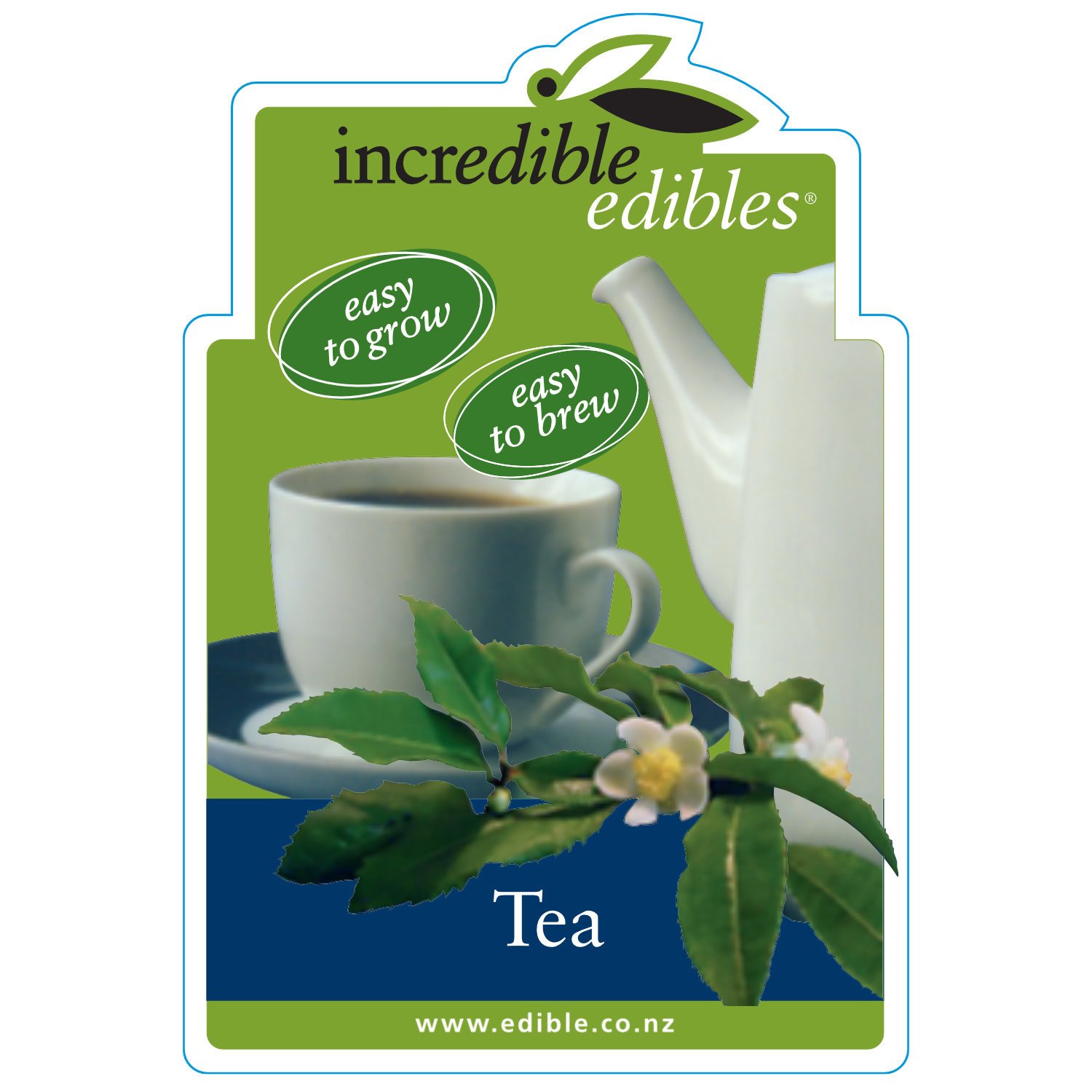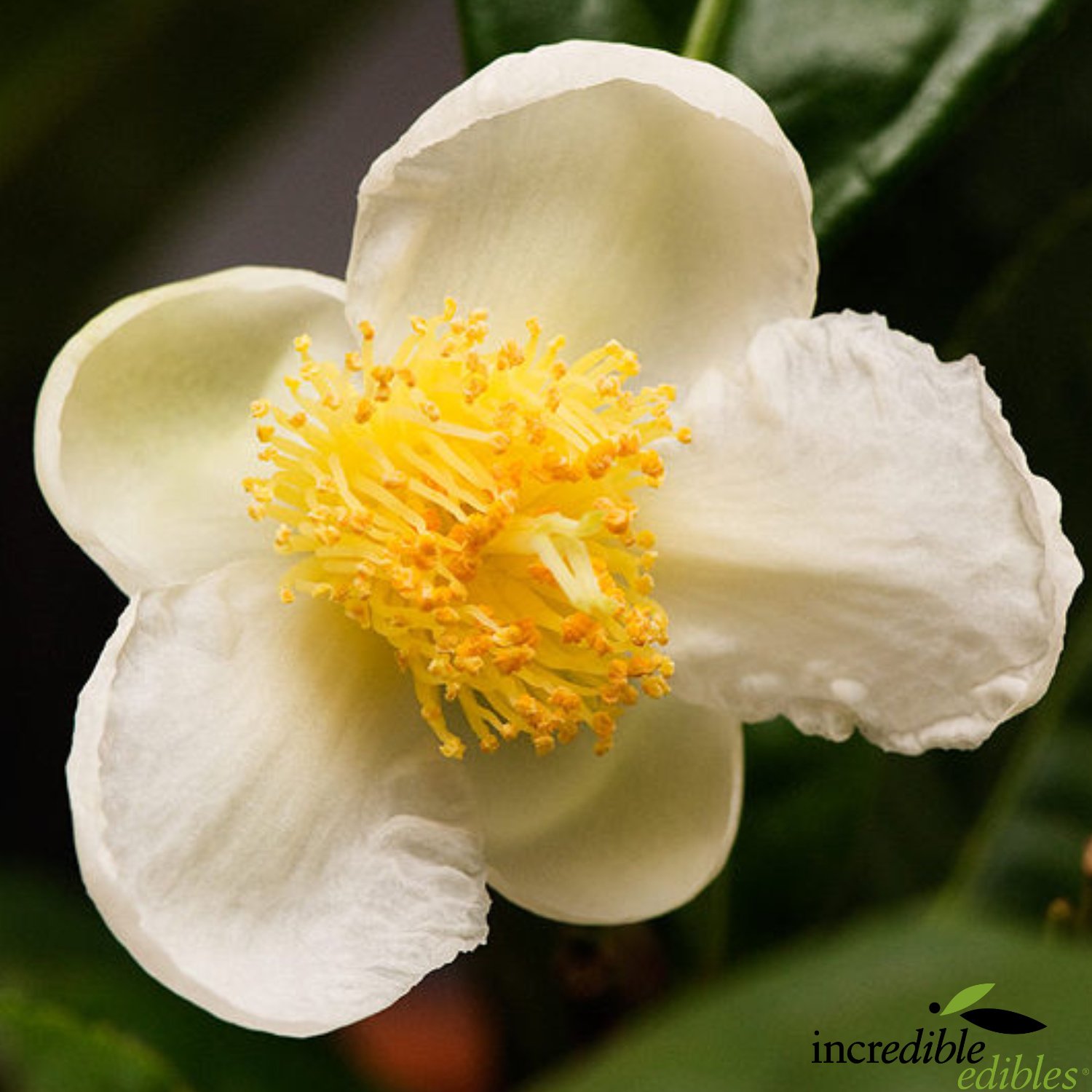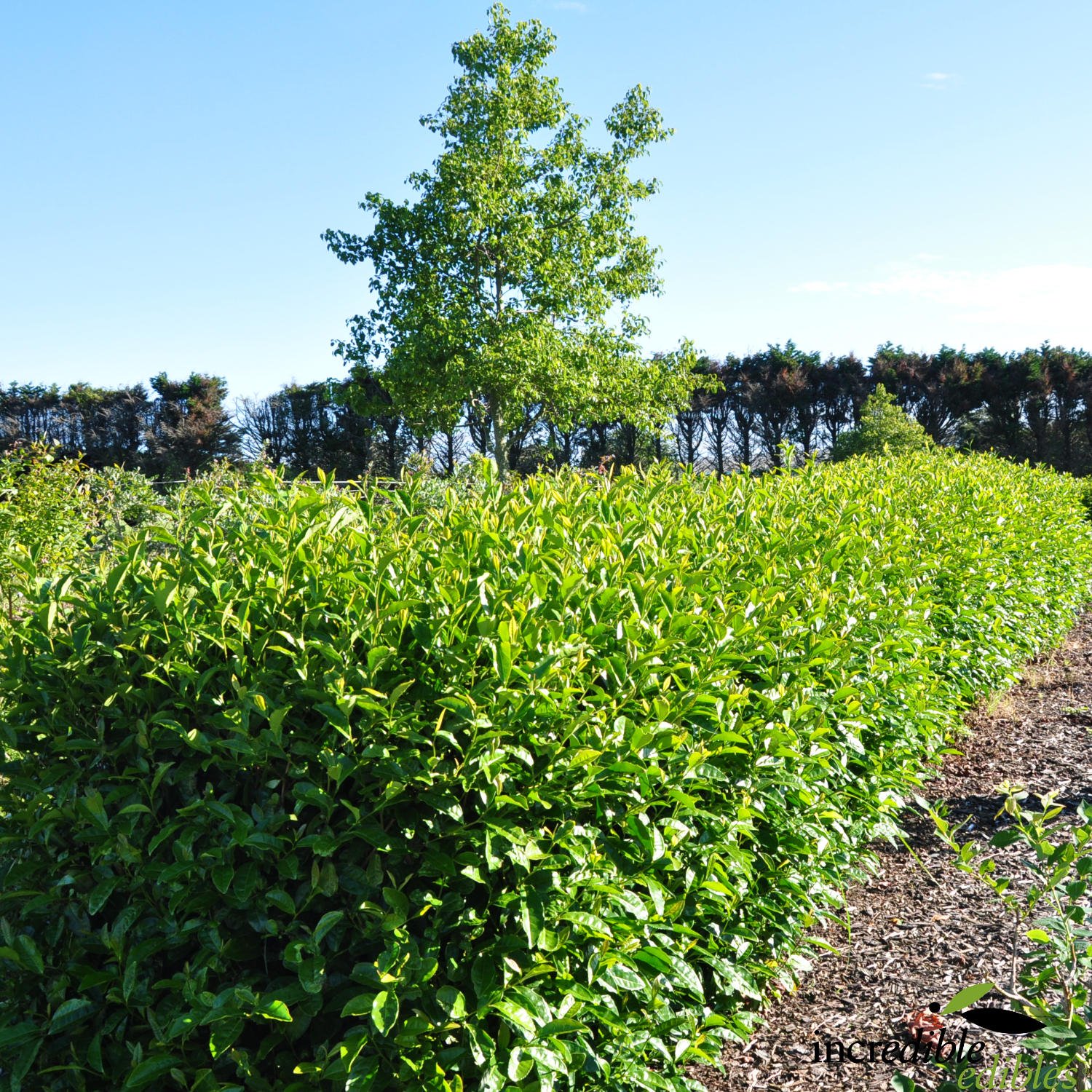 Image 1 of 4
Image 1 of 4

 Image 2 of 4
Image 2 of 4

 Image 3 of 4
Image 3 of 4

 Image 4 of 4
Image 4 of 4





Tea
Landscaping
Excellent as a medium-sized hedge with good density and regrowth and will provide numerous cups of Tea. Can also be planted a specimen tree in the garden.
Culinary & Nutrition
Used for thousands of years by Chinese people till the 17th century, and now Britain has become the world’s greatest tea drinkers. Tea has been linked to cancer prevention and has anti-ageing effects.
Growing conditions
The Tea plant prefers a light shade position but can also grow in full sun, protected from the wind (not salt tolerant). It will survive light frosts and likes slightly acidic, well-draining soil (with lots of mulch).
An evergreen shrub with dark green glossy leaves will grow to a compact bush up to 2 meters high if pruned regularly. The Tea plant has fragrant, single white flowers that appear in autumn.
Harvest - Spring harvest offers the finest and most tender leaves of the highest quality. The summer and autumn harvests produce a more abundant but less delicate crop.
Harvest the first two leaves and the bud.
Dry the leaves for 17 hours in the shade. The air must be able to circulate the leaves. Your leaves are ready when squeezed into a ball and stay in a ball.
Put the dried leaves through a meat mincer or finely chop and crush so the leaves are bruised, and the flavour is released.
Spread on a tray 25mm thick and leave for an hour; turn and leave for another hour.
Using an old fan heater with a steel mesh frame above, heat the frame, place your leaves on the frame and turn occasionally until dry; aim for the bought tea effect.
Store away from light, moisture and heat in an airtight container (not plastic). Loose tea should have a shelf life of two years.
Landscaping
Excellent as a medium-sized hedge with good density and regrowth and will provide numerous cups of Tea. Can also be planted a specimen tree in the garden.
Culinary & Nutrition
Used for thousands of years by Chinese people till the 17th century, and now Britain has become the world’s greatest tea drinkers. Tea has been linked to cancer prevention and has anti-ageing effects.
Growing conditions
The Tea plant prefers a light shade position but can also grow in full sun, protected from the wind (not salt tolerant). It will survive light frosts and likes slightly acidic, well-draining soil (with lots of mulch).
An evergreen shrub with dark green glossy leaves will grow to a compact bush up to 2 meters high if pruned regularly. The Tea plant has fragrant, single white flowers that appear in autumn.
Harvest - Spring harvest offers the finest and most tender leaves of the highest quality. The summer and autumn harvests produce a more abundant but less delicate crop.
Harvest the first two leaves and the bud.
Dry the leaves for 17 hours in the shade. The air must be able to circulate the leaves. Your leaves are ready when squeezed into a ball and stay in a ball.
Put the dried leaves through a meat mincer or finely chop and crush so the leaves are bruised, and the flavour is released.
Spread on a tray 25mm thick and leave for an hour; turn and leave for another hour.
Using an old fan heater with a steel mesh frame above, heat the frame, place your leaves on the frame and turn occasionally until dry; aim for the bought tea effect.
Store away from light, moisture and heat in an airtight container (not plastic). Loose tea should have a shelf life of two years.
Landscaping
Excellent as a medium-sized hedge with good density and regrowth and will provide numerous cups of Tea. Can also be planted a specimen tree in the garden.
Culinary & Nutrition
Used for thousands of years by Chinese people till the 17th century, and now Britain has become the world’s greatest tea drinkers. Tea has been linked to cancer prevention and has anti-ageing effects.
Growing conditions
The Tea plant prefers a light shade position but can also grow in full sun, protected from the wind (not salt tolerant). It will survive light frosts and likes slightly acidic, well-draining soil (with lots of mulch).
An evergreen shrub with dark green glossy leaves will grow to a compact bush up to 2 meters high if pruned regularly. The Tea plant has fragrant, single white flowers that appear in autumn.
Harvest - Spring harvest offers the finest and most tender leaves of the highest quality. The summer and autumn harvests produce a more abundant but less delicate crop.
Harvest the first two leaves and the bud.
Dry the leaves for 17 hours in the shade. The air must be able to circulate the leaves. Your leaves are ready when squeezed into a ball and stay in a ball.
Put the dried leaves through a meat mincer or finely chop and crush so the leaves are bruised, and the flavour is released.
Spread on a tray 25mm thick and leave for an hour; turn and leave for another hour.
Using an old fan heater with a steel mesh frame above, heat the frame, place your leaves on the frame and turn occasionally until dry; aim for the bought tea effect.
Store away from light, moisture and heat in an airtight container (not plastic). Loose tea should have a shelf life of two years.

